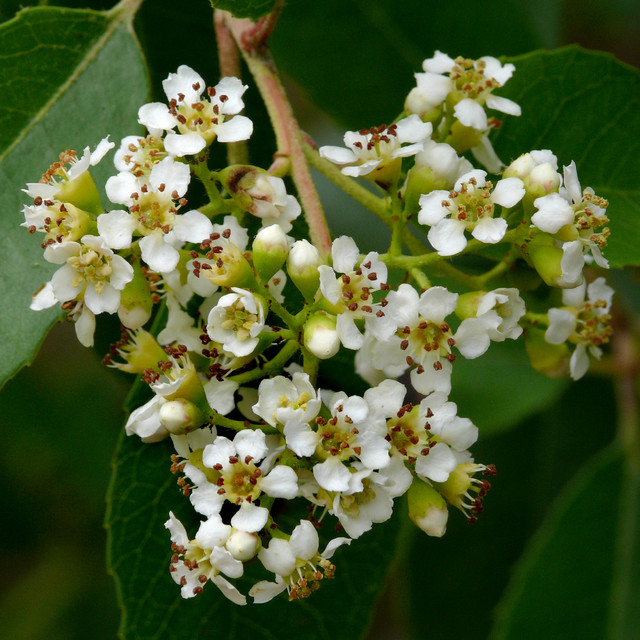 |
Photo by Joyce Docent
California Holly (Heteromeles arbutifolia) |
This is another one of those interesting plants and easy to grow if you want a low maintenance. It's also a perfect wildlife attracting plant for your landscape. Unlike some other Hollys which are inedible to us and perhaps toxic to kids, this one is a safe choice and there are some recipes out there on the Internet for making jams and I've personally used them as a snack with brown sugar in the oven. Birds are the first wildlife that come to mind like Blue ScrubJays, American Robins, Mockingbirds and even Cedar Waxwings. In fact the very first time I ever saw or even knew Cedar Waxwings were even in California was when I was at work on a coffee break and a hedge row of California Holly which looked more like small trees than shrubs, had three of them feeding on the berries which hang on the shrub till well into late winter. It was really exciting to observe them actually living there.
 |
| Photo by Lorcan Keating |
 |
| Photo by Jay Thesken |
 |
| Photo by JR Crompton |
Not to be overlooked is this shrub's potential ability at attracting beneficial insects which also help out in the landscape maintenance and which eventually leads to natural pest control. If I remember correctly, these flowers didn't come out until late spring or early summer, which was great. Most of your Lavendar Plants flower in summer as well and attract beneficial like predatory wasps which target worms, grubs or caterpillars which make a meal of your landscape where you don't want them. In this way they have the same beneficial function besides beauty as the California Coffeeberry (Rhamnus californica) I mentioned in an earlier post last week.
Some of the other important colour the flower blooms bring to your garden are the Monarch and Swallowtail Butterflies.

This is also another plant I have found near Native American archeological site where you find evidence of their past presence by those Metate Gringing Holes drilled into hard granite rock slabs or boulders where they crushed Acorns and other grains or seeds into flour for baking bread. There are a great many plants that I use to identify for actually finding archeological sites. The Native Americans name for California Holly is actually 'Toyon' which is also used today by gardeners, landscapers and Native Plant Nurseries. Other associated plants and shrubs of note when looking for these Indian Kitichen sites are the native Prickly Pear Cactus and Mexican Elderberry. It could be said and there appears to be evidence that these plants were deliberately planted by the natives themselves as a convenient part of their pantry, since almost every site I've ever visited or discovered had all these plants present.







No comments:
Post a Comment
Thanks for visiting and for your comments!
I will try to respond to each comment within a few days, though sometimes I take longer if I'm too busy which appears to be increasing.